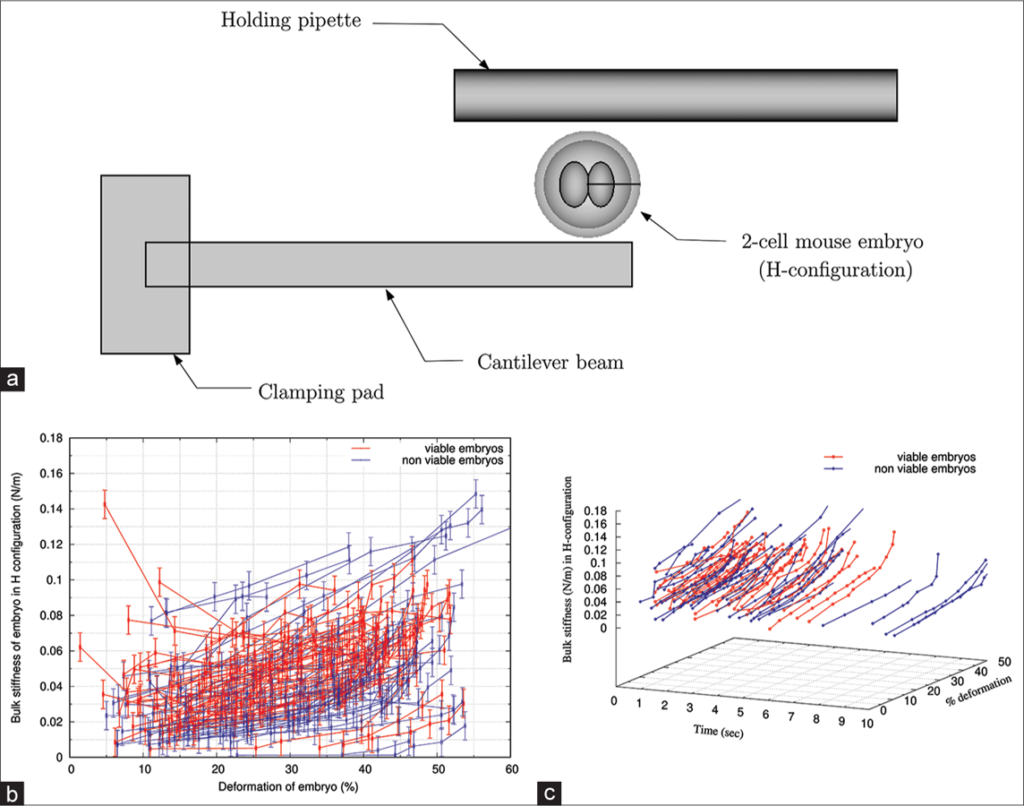Understanding the onset of embryonic arrest by studying the morphology of the embryos at different stages of their development is a relatively well-understood subject. The qualitative nature of the study makes it difficult to determine and quantify the causes behind the arrest. For successful embryonic development, it is essential to know, non-destructively, and the developmental viability of the embryos at a particular stage.
We investigate the bulk stiffness and recovery time as the viability quantifiers for grading or classifying embryos at the two-cell stage or after the formation of the first cleavage. A simple cantilever beam-based experimental procedure is established to investigate two-cell mouse embryos in two distinct orientations.
Bulk stiffness measurement varies with the embryo’s orientation and deformation. A good quality two-cell embryo shows a significant decrease in stiffness ratio with the deformation. Also, the embryo’s recovery time after releasing deformation may indicate a quality-dependent correlation.
Our study concludes that the bulk stiffness measurements in the two principal orientations, their ratio, and recovery time correlate with the underlying morphology of two-cell stage mouse embryos.
Here is the link for the full paper
https://jrhm.org/bulk-stiffness-and-recovery-time-a-measure-of-development-of-mouse-embryos/#F3
